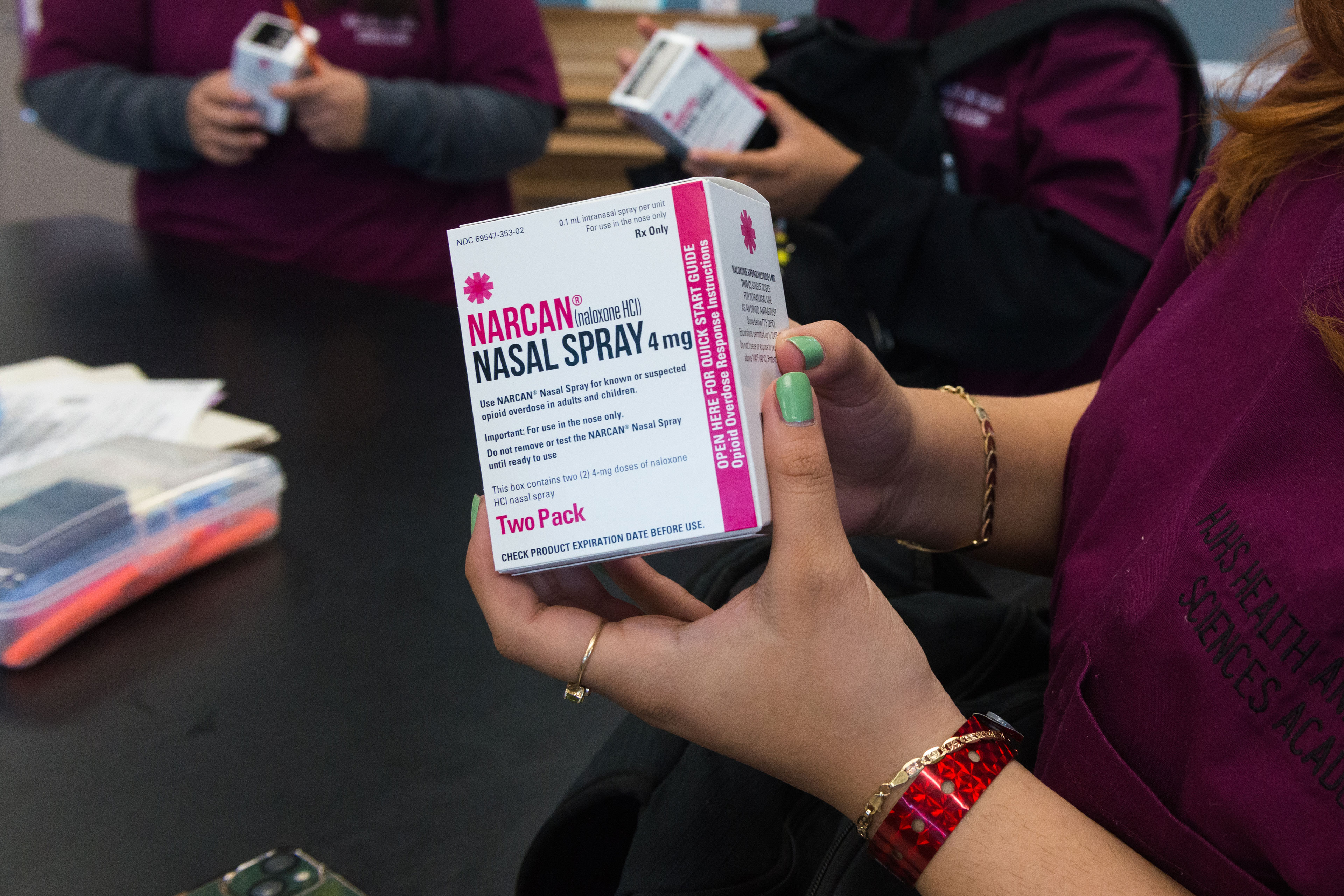California Healthline reporter and producer Heidi de Marco visited a Sacramento high school to see how teens are being trained to reverse drug overdoses. She explained what she learned for Radio Bilingüe’s “Edición Semanaria” (“Weekly Edition”) on Nov. 18.
From Los Angeles to Sacramento, schools are stocking up on naloxone, the opioid overdose reversal drug also known by the brand name Narcan, and are training nurses, staffers, and volunteers to administer it. Drug deaths among adolescents more than doubled from 2019 to 2021, according to research published this year in JAMA.
In some places, students are being trained, too. “They’re the ones going to the parties,” said Abby Serin, a school nurse who recently participated in a training program at Hiram Johnson High School in Sacramento that was organized through the Public Health Institute. “They’re seeing this stuff.”
Such training comes as the overdose reversal drug could become more accessible. The FDA recently said certain types of naloxone — a nasal spray and an autoinjector — may be safe without a prescription. If one is no longer required, people could buy the drug online or over the counter as early as next year.

Stockpiling Tax Penalties
California Healthline contributing radio correspondent Stephanie O’Neill explained that nearly three years after California started fining residents who don’t have health insurance, the state has not distributed any of the revenue it has collected — money that was intended to help Californians struggling to pay for coverage.
State finance officials have estimated that the revenue collected via the penalty in its first three years, from 2020 through 2022, will total about $1.3 billion. Gov. Gavin Newsom argues the state should hold on to the money in case Californians need help paying for insurance in the future.
Read California Healthline senior correspondent Angela Hart’s scoop about the state stockpile of tax penalties here.
Centene Political Spending
California Healthline contributing radio correspondent Stephanie O’Neill reported that Centene, the largest Medicaid managed-care company in the U.S., has thrown more than $26.9 million at political campaigns across the country since 2015, especially focused on states where it is wooing Medicaid contracts and settling accusations that it overbilled taxpayers.
Among the company’s tactics: Executives and their family members made political contributions in their own names. For instance, from 2015 through 2021, Centene’s then-CEO Michael Neidorff and his wife, Noémi, wrote at least $380,000 in personal checks to state candidates, with more than 60% going to Newsom, a Democrat who governs a state where the insurer generated 11% of its revenue in 2019.
California Healthline senior correspondent Samantha Young teamed up with KHN senior editor Andy Miller and KHN contributor Rebecca Grapevine to dig into Centene’s political giving. Read more about their findings here.
Medicaid for Kids
California Healthline contributing radio correspondent Stephanie O’Neill explained how several Western states, including California, are considering enrollment policies that would allow young kids to stay on Medicaid for several years without interruption after they are born.
Before the covid-19 pandemic, millions of children churned on and off Medicaid each year. California lawmakers have approved a proposal for children who qualify for Medicaid to enroll at birth and stay enrolled until age 5, starting in 2025, pending federal approval.
Read KHN senior correspondent Phil Galewitz’s story about continuous enrollment policies.



